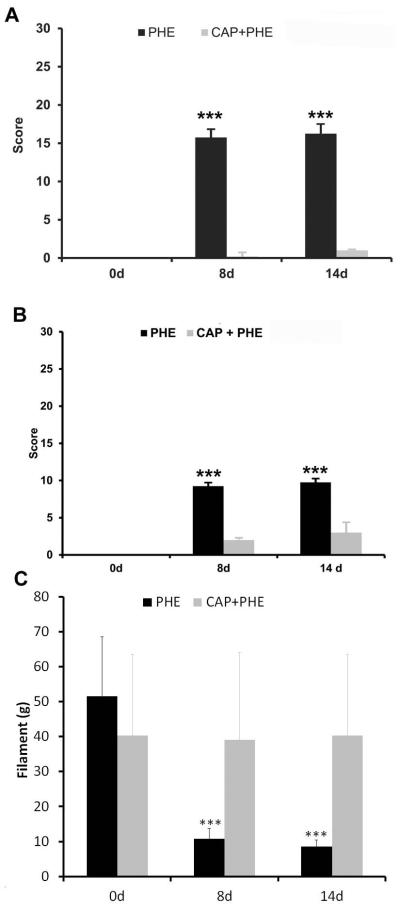Fig 1.
(A) Graph bar showing test 1 mean score. After chronic adrenergic stimulation with 2.5 mg of PHE/kg body weight, animals presented a decrease in breathing rate, in eye aperture and rounded-back posture characteristic of pain-related behaviour. Pre-treatment with capsaicin abolished visceral pain behavior (*** P < 0.001 comparing day 8 or day 14 with day 0, Kruskal-Wallis test followed by Dunn’s test). (B) Graph bar showing test 2 mean score. After chronic adrenergic stimulation with 2.5 mg of PHE/kg body weight, animals presented strong piloerection, heavy breathing and abdomen stretched characteristic of visceral pain crisis. Pre-treatment with capsaicin abolished visceral pain crisis (P>0.05, comparing day 8 and day 14 in both tests, P>0.05 comparing day 0 with day 8 and day 14 of animals pre-treated with capsaicin, *** P < 0.001 comparing day 8 or day 14 with day 0 of PHE treated animals, in both test, Kruskal-Wallis test followed by Dunn’s test). (C) Graph bar showing lower abdominal mechanical pain threshold using Von Frey filaments. After chronic adrenergic stimulation with 2.5 mg of PHE/kg body weight, animals presented a decrease in the mechanical pain threshold (*** P < 0.001 comparing day 0 with day 8 and day 14, Kruskal-Wallis test followed by Dunn’s test). Pre-treatment with capsaicin abolished abdominal mechanical pain threshold.

